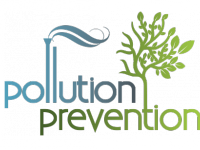Technology
OECD UPDATES ITS PUBLICATION ABOUT ENVIRONMENT REGARDING POLLUTION
AND RENEWABLE ENERGY

OECD Logo (Source: Courtesy of OECD)
USPA NEWS -
The OECD has updated its publication reference which reflects the progress made in the field of the environment - the use of waste to energy per capita consumption through recycling - since 1990. The Panorama of the 2015 environment provides a progress report on countries.
The OECD has updated its publication reference which reflects the progress made in the field of the environment - the use of waste to energy per capita consumption through recycling - since 1990. The Panorama of the 2015 environment provides a progress report on countries and provides data that can be downloaded as Excel files via StatLinks under each graph in the report. The report also examines environmental trends in the OECD area.
EXAMPLES OF WASTE PRODUCED PER YEAR PER CAPITA---------------------------------------------------------------------
For example, in terms of municipal waste we produce almost 520kg of waste per year per capita, which is 30kg less than in 2000 but 20 kg more than in 1990.-------------------------------------------------------------------------------------------------------------
For the air pollution over 90% of the population in OECD countries is exposed to concentrations of fine particles above which adverse health effects have been observed.-------------------------------------------------------------------------------------------
Energy: renewable energy account for 21% of electricity production in the OECD in 2014 against 15.6% in 2000 and almost 9% of the total energy supply, against 6% in 2000.
For the use of vehicles: the road traffic growth rates exceeded economic growth in most OECD countries. Official source OECD
Oecde Secretary General Angel Gurria Peru Pollution Sustainable Development Environment Renewable Energy Growth Rahma Sophia Rachdi
Liability for this article lies with the author, who also holds the copyright. Editorial content from USPA may be quoted on other websites as long as the quote comprises no more than 5% of the entire text, is marked as such and the source is named (via hyperlink).






